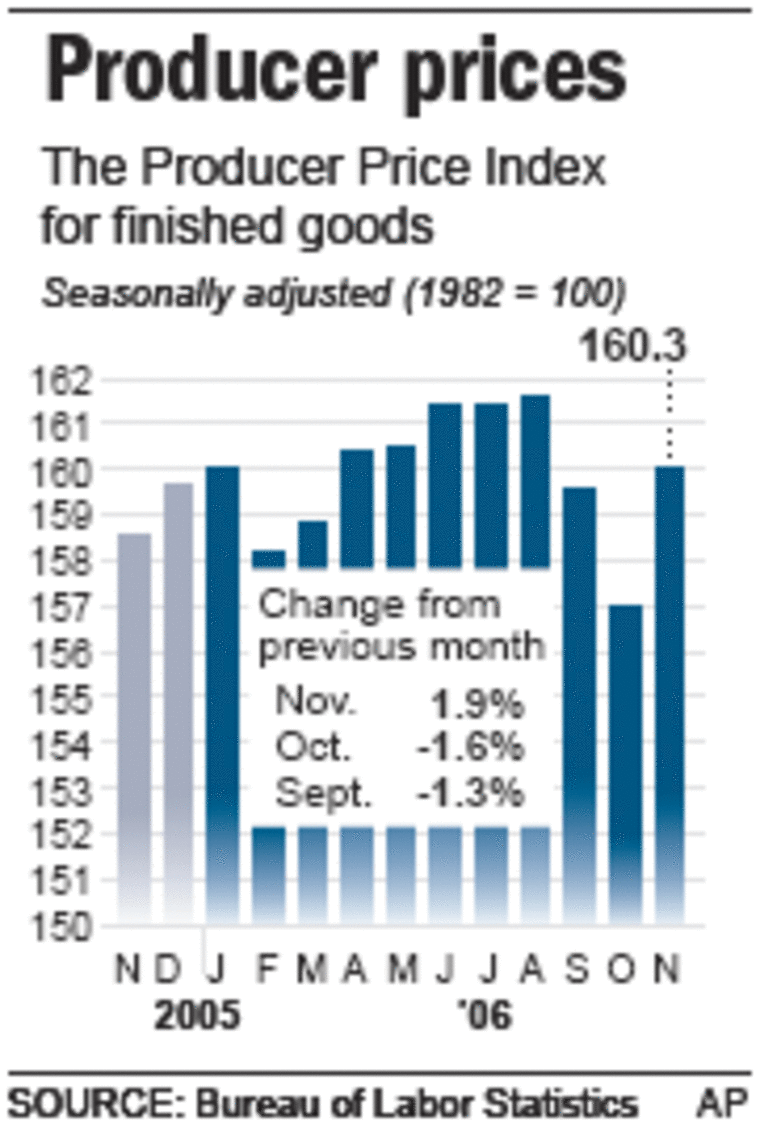Inflation at the wholesale level surged by the largest amount in more than three decades in November, after two months of falling producer prices.
The Producer Price Index, which measures inflation pressures before they reach the consumer, was up 2 percent last month, the biggest advance since a similar increase in November 1974, the Labor Department reported Tuesday.
Economists had been expecting a rebound in wholesale prices. However, the 2 percent jump was four times bigger than the 0.5 percent increase they had forecast. Even excluding volatile energy and food prices, core inflation posted a 1.3 percent advance, the biggest jump in 26 years.
The jump in producer prices follows back-to-back declines in September, when the index fell 1.3 percent, and October, when producer prices fell 1.6 percent. The three-month average, which economists use to smooth out month-to-month bounces, works out to a drop of just 0.3 percent. Core producer price inflation, on a three-month basis, is rising at 3-tenths percent per month.
The report on wholesale prices was in contrast to last week’s report that consumer prices were flat in November, the third straight month of price relief at the retail level.
The big difference was energy costs, which fell in the consumer survey but were up 6.1 percent in the November survey of wholesale prices.
The rise in wholesale energy costs was led by a 17.9 percent jump in gasoline prices, the biggest increase since June 2000. Natural gas for home use, home heating oil and diesel fuel costs all posted big gains at the wholesale level as well.
The performance of wholesale prices was certain to raise concerns about whether more price pressures are in the pipeline. Federal Reserve officials last week left interest rates unchanged at their final meeting of the year but said they continued to be worried about inflation pressures.

The 2 percent rise in wholesale inflation followed four straight months of benign readings including outright big declines of 1.3 percent in September and 1.6 percent in October.
In those months, energy prices were falling sharply, a situation that reversed in November.
Food costs showed a small 0.1 percent rise last month after a big 0.8 percent decline in October as increases in the price of dairy products, eggs and soft drinks offset declines in vegetable and fruit prices.
The 1.3 percent rise in core wholesale inflation, which excludes energy and food, followed a big 0.9 percent drop in October and was the biggest one-month gain since a similar 1.3 percent rise in July 1980.
The increase in the core rate of inflation was led by a record 13.7 percent jump in the price of light trucks, a category that includes sport utility vehicles. The price of new passenger cars rose by 2.2 percent.